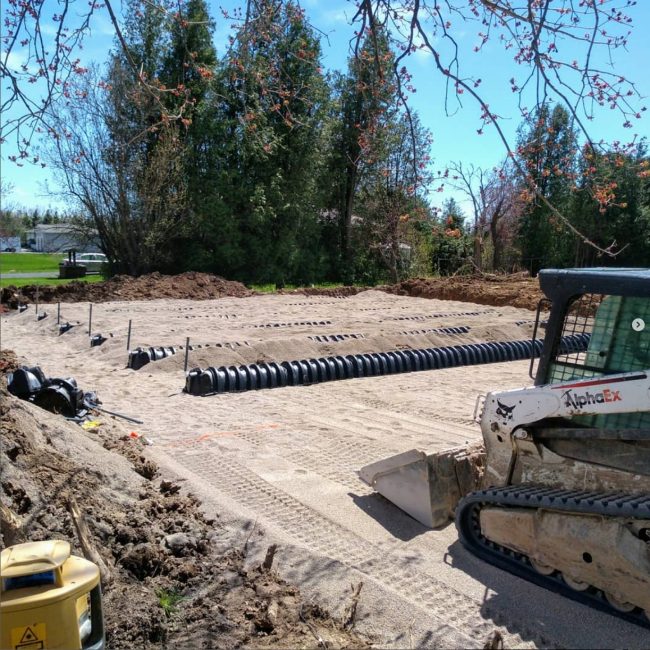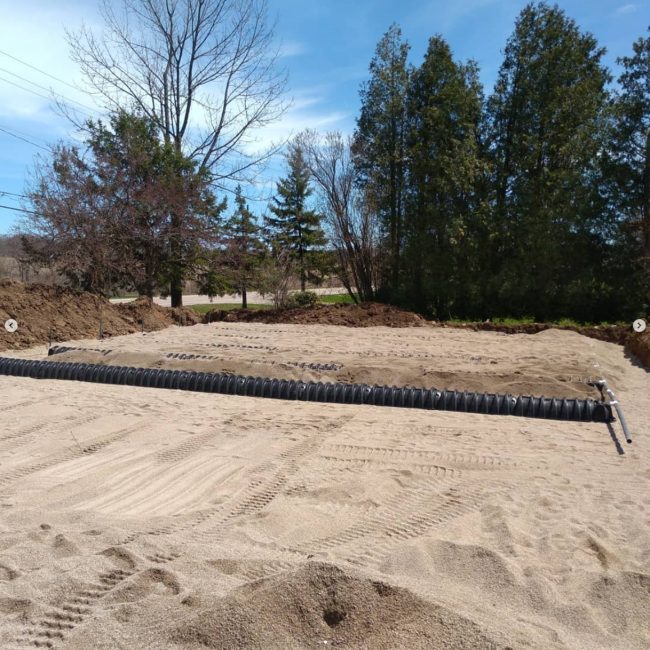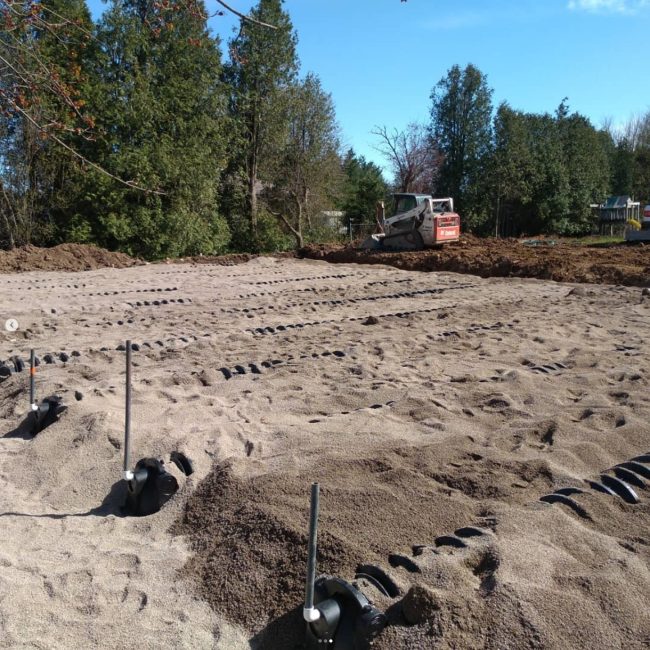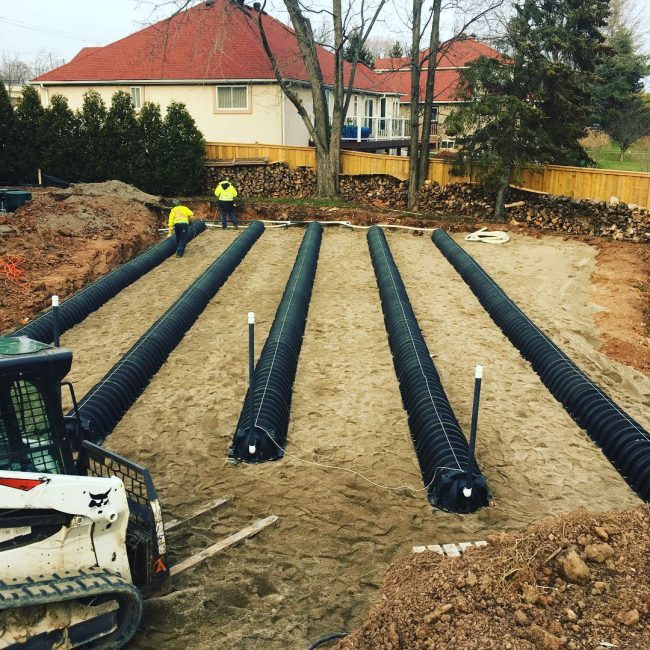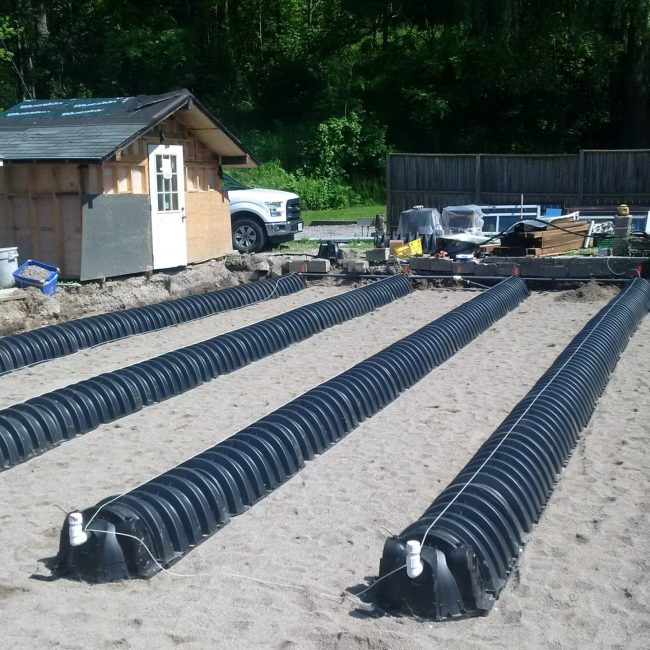Shallow Buried Trench Leaching Beds
Alpha Ex | Shallow Buried Trench (SBT) Leaching Beds
Shallow Buried Trench (SBT) leaching beds use pressurized distribution and time dosing to load trenches evenly at shallow depth, where oxygen supports aerobic polishing. Under OBC Part 8, SBT can be installed in native soils or approved leaching bed fill when percolation and setbacks are met. The result is a compact, predictable bed that protects groundwater while fitting challenging lots.
On this page
What Is a Shallow Buried Trench Leaching Bed?
SBT is an engineered bed that distributes effluent under low pressure through small orifices along each lateral. Time dosing meters flow so the soil absorbs consistent, repeatable volumes, reducing local overloading. The shallow placement keeps the infiltrative surface in a higher-oxygen zone to support aerobic treatment before effluent moves to underlying soil.
Key Properties of SBT Leaching Beds
- Pressurized distribution: even loading across the bed; fewer “hot spots.”
- Time dosing: controls dose volume/interval for predictable soil acceptance.
- Shallow placement: more oxygen for polishing; improved biomat management.
- Leaching bed fill: OBC allows fill when it meets percolation requirements. Industry practice often targets T in the ~5–10 range for polishing where appropriate for the design.
- Compact footprint: efficient use of constrained or environmentally sensitive sites.
Installation in Soil or Leaching Bed Fill
SBT may be installed in native soils or in leaching bed fill that satisfies OBC percolation criteria (1 < T ≤ 125 for the design scenario). Using a well-graded fill layer can increase polishing and lateral movement before percolation into the underlying native soil—especially valuable on lots with variable native horizons.
Because SBT uses pressure and dosing, it does not rely on a long downstream sand mantle the way some gravity systems do. Instead, design focuses on distribution uniformity, trench sizing, orifice/nozzle hydraulics, and dosing frequency to match the site’s acceptance rate.
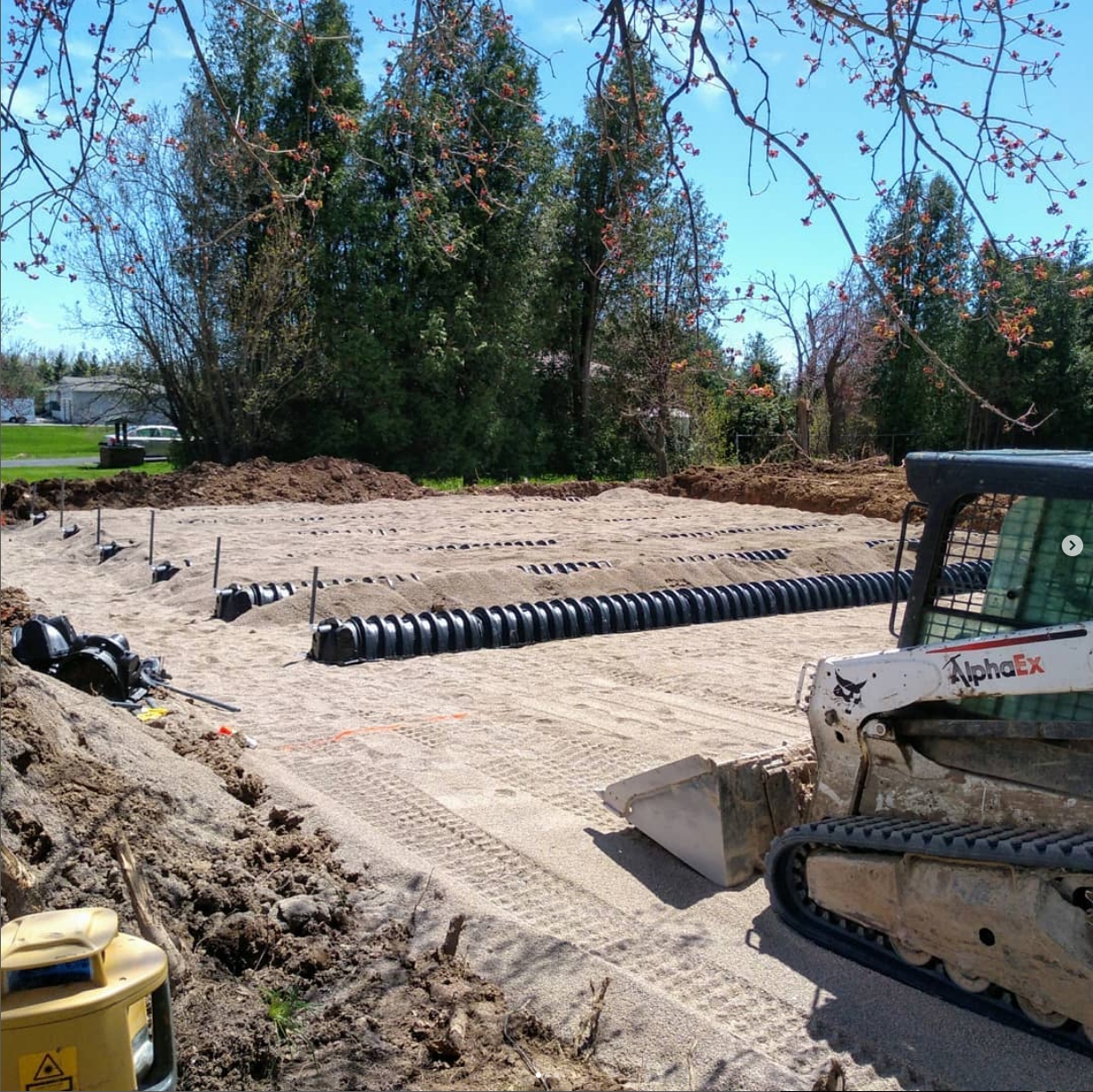
SBT vs Conventional vs Raised/Mounded Beds
| Aspect | SBT (Pressurized) | Conventional (Gravity) | Raised/Mounded |
|---|---|---|---|
| Distribution | Pressurized, even dosing by timer | Variable; follows slope/grade | Can be pressurized or gravity |
| Oxygen Environment | Shallow; aerobic polishing encouraged | Depth varies; less oxygen as depth increases | Raised; oxygen maintained above native grade |
| Footprint | Compact for many sites | Larger area | Larger visible profile (mound) |
| When Preferable | Constrained lots, variable soils | Good soils and space | High water table or shallow bedrock |
| Design Focus | Dose volume, trench spacing, headloss | Grading, distribution spacing | Fill quality, height, separation |
Final selection depends on soil testing, setbacks, groundwater, and lot constraints under OBC Part 8.
Why Choose Alpha Ex for SBT Design & Installation
We design and build systems that meet code and perform in the real world. Our team sizes SBT components based on percolation and hydraulics, coordinates permits/inspections, and stages construction to protect soils during access and backfilling. Where SBT isn’t the best fit, we’ll recommend conventional or raised alternatives with clear trade-offs.
Examples of Our SBT Installations
Contact Us
Have drawings or soil test results? Send them along—we’ll review and advise the right approach for your site.


